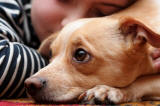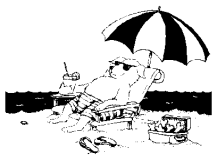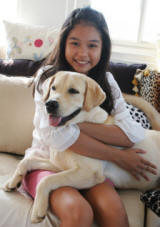Introduction
 The
"come" instruction is the most
important one of all because you could save your dog's life.
In addition to the importance of
recall training, having a dog
come when you call means your
dog trusts and respects you.
Dogs who come quickly when
called are not afraid of their
owners but do rely on their
owner's leadership.
The
"come" instruction is the most
important one of all because you could save your dog's life.
In addition to the importance of
recall training, having a dog
come when you call means your
dog trusts and respects you.
Dogs who come quickly when
called are not afraid of their
owners but do rely on their
owner's leadership.
|
Nothing negative should ever
occur after calling the dog
to you. The
dog must associate
coming to you with all good
things. |
Prevent accidental
punishment after calling your dog
 Many
dogs will NOT
come when called because they have learned that hearing the Instruction,
"Come"
is a bad word.
Many
dogs will NOT
come when called because they have learned that hearing the Instruction,
"Come"
is a bad word.
For example, an owner comes home
and finds a mess. He or she calls the dog using the Instruction, "Come"
and then punishes the dog. The dog quickly learns the word "come"
immediately precedes some type of punishment or scolding.
A second
example is when the dog is allowed to play off-leash in a fun, safe
area, and the owner says, "Come," to mean the fun is over, time to
go home. The dog then begins to associate the word "Come"
as the end of freedom and fun.
 Therefore,
NEVER use the instruction,
"come" to discipline the dog or do anything he or
she might perceive as unpleasant, like giving
medication, or the dog may associate returning to
you with a negative experience. Instead, approach
the dog if something negative such as being put
outdoors is about to happen.
Therefore,
NEVER use the instruction,
"come" to discipline the dog or do anything he or
she might perceive as unpleasant, like giving
medication, or the dog may associate returning to
you with a negative experience. Instead, approach
the dog if something negative such as being put
outdoors is about to happen.
ALWAYS ask your dog to "EARN"
every thing he wants so that he will be EAGER to
come when you call. Make sure that the
word, come, is always be associated with positive,
good things!
Make it in the
dog's best interest to "come" when called
 Do
NOT call your dog if you know he won't come.
Do
NOT call your dog if you know he won't come.
ALWAYS
call the dog to breakfast
and dinner.
Before placing the
food bowl down, back
up, and
say, "Come" in an excited voice.
The chances are almost 100% that
the dog will come.
Before feeding a meal, call your
dog from room to room for a treat or kibble to
reinforce the "come" instruction.
Hold the end
of the leash, give the
"sit-stay"
instruction. Then walk
to the end of the leash. Turn
and face the dog and give the
instruction, "Come."
if the dog does NOT come, use
the leash to insist. Praise as you use the leash.
NEVER threaten.
R
epeat the same
exercise using a long lead. Give
treats for the fastest responses. Keep the dog
guessing.
When the
dog has demonstrated a reliable
"come" inside the house
and on a long lead, find a safe, fenced area (like a
tennis court or school yard) for off-leash practice.
If the dog
does not come
Keep a 50 foot leash on the dog at all times
until you feel confident the dog will come when
called. That way you can call once and "insist"
using the leash. Praise the
dog for being reeled in but do NOT give a food
treat. ALWAYS smile,
praise, and lavish your attention on the dog to
build a strong bond and reliable response.
Teach the
dog that "come" means to park in front of you in a
sit position, look into your eyes and expect
something wonderful.